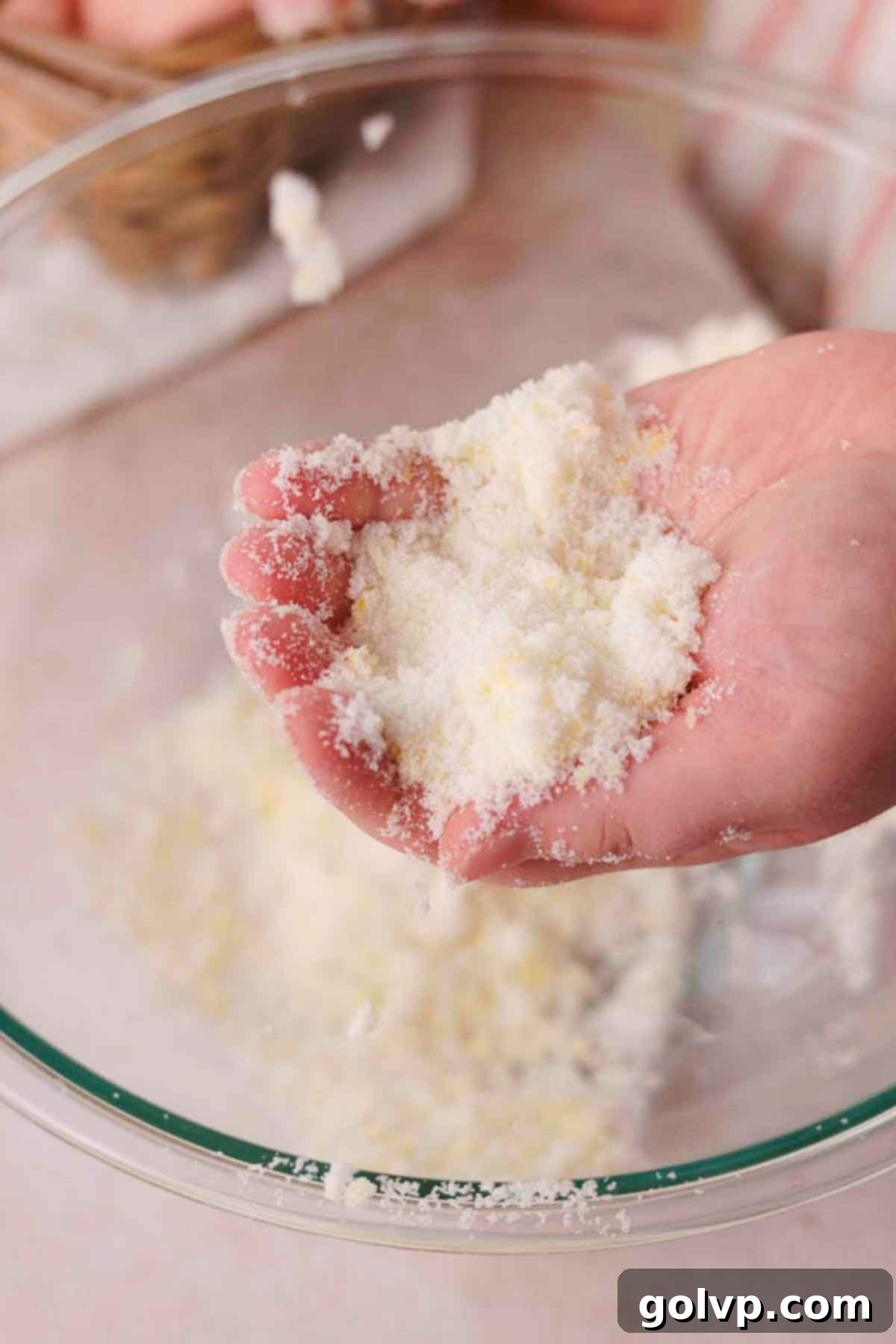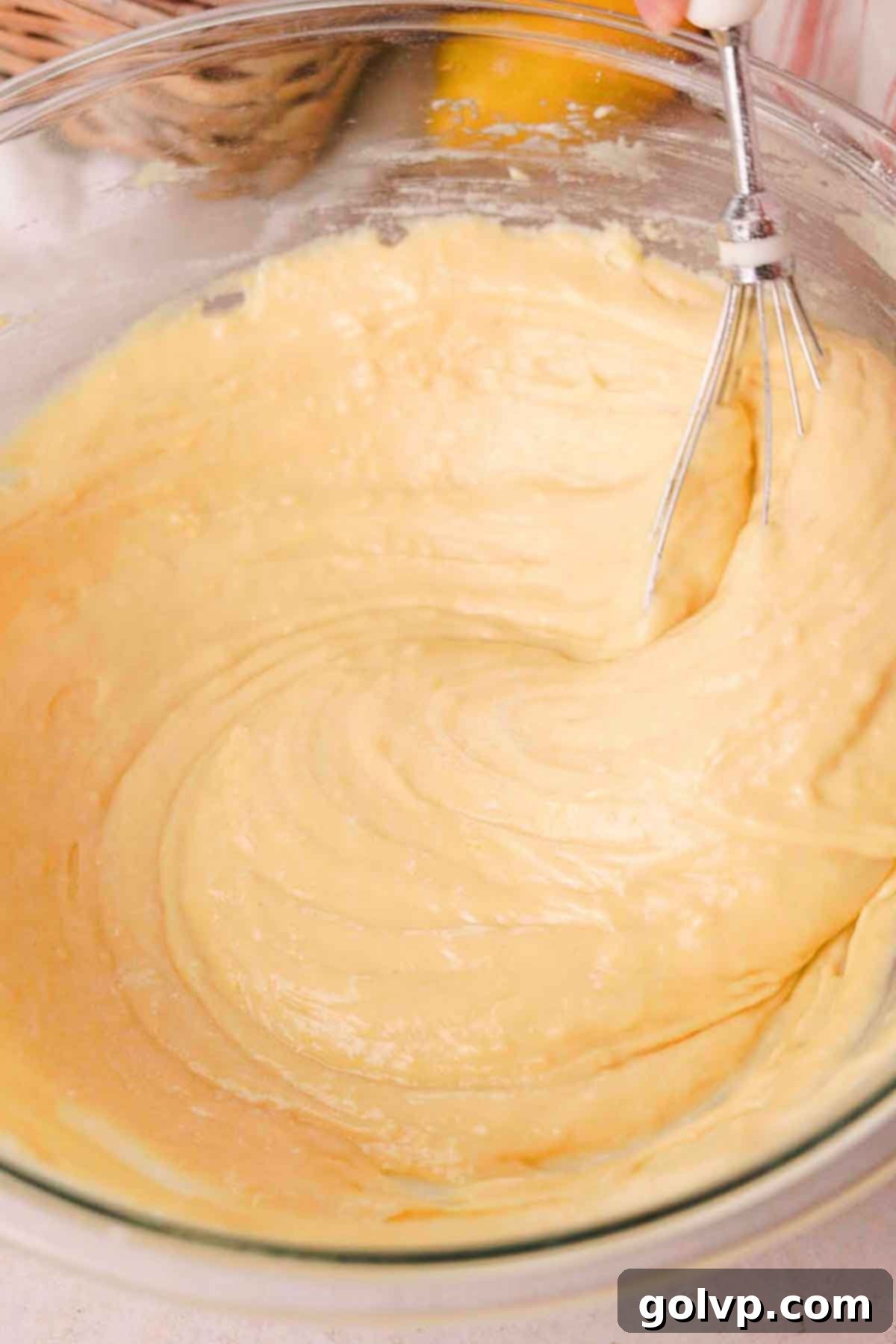Irresistibly Moist Lemon Olive Oil Cake with Sticky Candied Lemon Topping
Prepare to be enchanted by this extraordinary lemon olive oil cake, a true masterpiece of flavor and texture. Each slice promises a delightful experience, beginning with its signature sticky lemon topping that gleams with caramelized sweetness and tangy zest. This cake isn’t just moist; it’s incredibly soft, fluffy, and tender, a testament to the magic of olive oil in baking. The unique upside-down lemon topping is a culinary marvel – sticky, wonderfully gooey, and bursting with vibrant lemon flavor that’s bright and tangy, never bitter. The zesty lemon perfectly complements the subtle, earthy notes of the olive oil, which in turn creates an exceptionally moist and tender crumb. This harmonious blend of ingredients results in a cake that’s both sophisticated and comforting, making it an instant favorite for any occasion.

🍋 Why You’ll Absolutely LOVE This Lemon Olive Oil Cake Recipe
This lemon olive oil cake is more than just a dessert; it’s a delightful baking project that promises incredible results with minimal effort. Here’s why it’s destined to become a staple in your recipe collection:
- Effortlessly Easy: Forget about complicated techniques or needing an army of kitchen gadgets. This recipe features a simple one-bowl batter that comes together quickly, requiring no electric mixer. It’s perfect for beginner bakers and experienced cooks alike who appreciate a straightforward approach to delicious homemade treats.
- Spectacular Upside-Down Design: The ingenious upside-down method creates a visually stunning and incredibly flavorful topping. Thin slices of lemon are laid at the bottom of the pan, where they caramelize in a butter and sugar mixture during baking. This process transforms them into sweet, sticky, and slightly candied jewels that form a beautiful, tangy, and irresistible top layer once the cake is inverted.
- Sophisticated Olive Oil Flavor and Texture: The inclusion of olive oil is a game-changer. It not only imparts a subtle, elegant earthiness that beautifully complements the bright lemon, but it also ensures an exceptionally tender, moist, and soft crumb. Unlike butter, olive oil contributes a delicate flavor that elevates the cake without making it greasy, resulting in a wonderfully light yet rich texture.
- Bursting with Bright Lemon Flavor: If you’re a lemon lover, this cake is your dream come true. We’ve packed it with lemon flavor from both the vibrant zest and fresh juice in the cake batter, and the candied slices in the topping. Each bite delivers a bright, zesty, citrusy, and perfectly tangy sensation that will invigorate your taste buds.
For more bright and zesty treats, be sure to explore our delightful lemon curd cookies and these incredibly tangy lemon brownies – perfect for any citrus enthusiast.

📝 Key Ingredients for the Perfect Lemon Olive Oil Cake
Achieving baking perfection starts with understanding your ingredients. Read through these essential tips for success!
Full steps and detailed ingredient quantities are provided in the recipe card below.
- Olive Oil: This is the star ingredient that truly sets this cake apart. Olive oil contributes to an incredibly soft, moist, and tender texture, while also imparting a subtle, nuanced flavor that harmonizes beautifully with lemon. For a more pronounced, grassy, and peppery note, opt for a good quality extra virgin olive oil (which is what I personally recommend). If you prefer a lighter, less assertive flavor, a light olive oil or even a neutral-flavored vegetable oil like grapeseed oil can be used as a substitute, though you might miss some of that signature olive oil character.
- Fresh Lemons: Lemon is central to both the flavor and aroma of this cake. You’ll need approximately 2 to 3 whole lemons for the sticky topping, depending on their size, ensuring a vibrant and full covering for the cake. Additionally, about 2 more lemons will be required for the cake batter itself, providing both fresh lemon juice for tang and zest for an intense aromatic burst. Always use fresh lemons for the best, brightest flavor – bottled lemon juice simply won’t compare.
- Greek Yogurt: Incorporating Greek yogurt is key to enhancing both the moisture and the tanginess of the cake. Its creamy texture adds richness and helps create a wonderfully tender crumb. If Greek yogurt isn’t readily available, you can create a suitable substitute: simply hang half a cup of regular plain yogurt in a cheesecloth over a bowl in the fridge for a few hours. This allows excess water to drain, leaving you with a thicker, creamier yogurt similar in consistency to Greek yogurt. Measure and use once it reaches the desired thickness.
- All-Purpose Flour: Accurate flour measurement is vital for successful baking, as too much or too little can drastically alter the cake’s texture. For the most precise results, I highly recommend weighing your flour using a kitchen scale. If you don’t have a scale, ensure proper measurement by first stirring the flour in its bag to loosen it. Then, gently spoon the flour into your measuring cup without packing it down. Finally, level off the excess with the flat edge of a knife, avoiding any compression of the flour in the cup.
👩🍳 How to Make the Ultimate Lemon Olive Oil Cake
Crafting the Irresistible Lemon Topping: Step by Step
Preparation: Before you begin, preheat your oven to 355°F (180°C). Line the bottom of an 8-inch square baking pan with a fitted square of parchment paper. It’s crucial to use a baking pan that does not have a removable bottom, as the buttery, sugary lemon topping can seep through during baking, creating a messy situation and potentially burning. A solid-bottom pan will ensure all that deliciousness stays right where it belongs.

Step 1: Grab a clean, dry cutting board and a sharp chef’s knife. Begin by carefully slicing off both ends of a lemon. Then, stand the lemon upright on one of its cut ends. Using a gentle sawing motion, cut the rind off in a square-like shape around the lemon, aiming to create a rectangular lemon log. This technique helps you achieve uniform slices, free from the bitter white pith.

Step 2: Lay the prepared lemon log down on its side. Continue to slice it into very thin rounds using the same gentle sawing motion. As you slice, be sure to remove any visible seeds you encounter – this will ensure a pleasant eating experience later. Repeat this process with the remaining lemons. You’ll typically need 2 to 3 lemons, depending on their size, to completely cover the bottom of your baking pan. Don’t discard the leftover lemon pieces; they’re perfect for making a refreshing lemon tea or homemade lemonade!

Step 3: Place the butter directly into the parchment-lined baking pan. Slide the pan into your preheating oven for just a minute or two, allowing the butter to melt completely. As soon as it’s melted, carefully remove the pan from the oven. Evenly sprinkle the granulated sugar over the melted butter. This sugar and butter mixture will create that wonderfully sticky, caramelized topping.

Step 4: Artfully arrange your thinly sliced lemon rounds in a single, even layer across the bottom of the pan. Try to keep the slices as close to each other as possible, minimizing gaps, to ensure a beautiful, uniform lemon topping. Once arranged, set the pan aside while you prepare the cake batter – this will allow the butter and sugar mixture to slightly cool and set around the lemons.
Pro Tip for a Bitter-Free Topping: I highly recommend trimming off the lemon rinds (the green/yellow peel and white pith) as shown. The white pith is notoriously bitter, and removing it ensures your topping is purely tangy and sweet. While a small amount of white pith in the corners won’t cause bitterness (as seen in the photo above), removing the bulk of it makes a significant difference for a perfectly balanced flavor profile.
Whipping Up the Moist Cake Batter: Step by Step

Step 1: In a spacious mixing bowl, combine the lemon zest and granulated sugar. Now, get your hands in there! Rub the zest and sugar together with your fingertips for about a minute. This essential step helps to release the fragrant oils from the lemon zest, infusing the sugar with intense lemon aroma and flavor. You’ll notice the sugar transform, looking like damp, aromatic sand, indicating its readiness.

Step 2: Crack the eggs into the lemon-infused sugar mixture. Using a wire whisk, vigorously whisk these ingredients together. Continue whisking for approximately 45 seconds, or until the mixture becomes visibly frothy and slightly lighter in color. This aeration helps to incorporate air into the batter, contributing to the cake’s light and fluffy texture.

Step 3: To the egg and sugar mixture, add the remaining wet ingredients: olive oil, freshly squeezed lemon juice, pure vanilla extract, Greek yogurt, and a pinch of sea salt. Whisk everything thoroughly until all the ingredients are fully combined and the mixture is smooth and emulsified. Ensure no streaks of oil or yogurt remain, as this affects the final texture of the cake.

Step 4: Carefully sift the all-purpose flour, baking soda, and baking powder directly into the bowl containing your wet ingredients. Sifting helps to aerate the dry ingredients and prevent lumps. Once added, gently fold the dry ingredients into the wet mixture using your whisk. Mix only until no more dry streaks of flour are visible. A few small lumps are perfectly fine – overmixing can develop the gluten too much, leading to a tough cake.

Step 5: Pour the prepared cake batter evenly over the lemon slices in the bottom of your baking pan. Gently spread it to the edges if needed, ensuring the lemon slices are fully covered. Place the pan into your preheated oven and bake for 35-40 minutes. The cake is ready when its top is beautifully golden brown, and a toothpick inserted into the center comes out mostly clean, with only a few moist crumbs attached. Resist the urge to open the oven door during the baking process until the very end; opening it too early can cause the center of the cake to sink.

Step 6: Once baked, remove the cake from the oven and let it cool in the baking pan for exactly 10 minutes. This cooling period is crucial for the cake to set and for the sticky topping to solidify slightly, preventing it from tearing when inverted. After 10 minutes, place your desired serving plate or wire rack directly on top of the baking pan. Carefully but confidently flip the entire assembly over. You might need to gently tap or wiggle the pan if the cake doesn’t release immediately. Once you feel it drop, lift off the baking pan to reveal your stunning, candied lemon topping. Gently peel off the parchment paper, allow the cake to cool to room temperature, then slice and serve.
✔️ Expert Cake Tips for Baking Success
Achieve bakery-quality results every time with these essential tips:
- Room Temperature Ingredients are Key: Always ensure your eggs, yogurt, and other dairy ingredients are at room temperature. This allows them to emulsify and combine more easily and thoroughly with the other ingredients, creating a smoother batter and a more uniform, tender crumb in your finished cake.
- Measure Flour Accurately: Flour is the structural backbone of your cake, and precise measurement is paramount. While weighing your flour with a kitchen scale (240g for 2 cups) is the most accurate method, if you’re using measuring cups, remember the “spoon and level” technique. Stir the flour in its container, then gently spoon it into the measuring cup until overflowing. Finally, level off the top with a straight edge (like the back of a knife) without packing or tapping the cup. This prevents adding too much flour, which can lead to a dry, dense cake.
- Avoid Overmixing the Batter: Once you’ve added the flour and leavening agents, mix the batter as little as possible. Use a gentle folding motion and stop mixing as soon as you no longer see dry streaks of flour. It’s perfectly fine, even desirable, for there to be a few small lumps. Overmixing develops the gluten in the flour, resulting in a tough, chewy cake rather than a tender, delicate one.
- Resist Opening the Oven Door: Patience is a virtue in baking! Avoid opening the oven door frequently, especially during the initial stages of baking. Each time the door opens, the oven temperature drops significantly, which can cause the cake to sink in the center or bake unevenly. Only check the cake towards the end of the baking time, when it’s almost done, to perform the toothpick test.

🥄 Make Ahead and Storage Tips for Your Lemon Olive Oil Cake
This lemon olive oil cake is wonderfully versatile, tasting fantastic fresh out of the oven, and equally delightful after a day or two. To maintain its freshness and moisture, store the cake in an airtight container at room temperature for up to 3 days. If you’re planning further ahead, this cake freezes exceptionally well. Simply wrap individual slices or the entire cooled cake tightly in plastic wrap, then place it in an airtight container or a freezer-safe bag. It can be stored in the freezer for up to 2 months, making it perfect for meal prepping desserts or unexpected guests.
To revive a stored or frozen slice and enjoy it as if it were just baked, gently reheat it in the oven (at a low temperature) or briefly in the microwave. This gentle warming helps to soften the starches in the cake, restoring its incredibly soft, fluffy, and tender texture, bringing out all its fresh lemon flavor.
✔️ Why You Should Cut Off the Lemon Rinds for a Superior Topping
When developing this recipe, I experimented with leaving the lemon rinds on for the topping. The result was an unpleasantly bitter taste, primarily due to the white spongy layer beneath the zest, known as the pith. The pith contains compounds that are intensely bitter, and when baked, this bitterness can permeate the entire topping, detracting from the bright, tangy lemon flavor we aim for.
By carefully trimming off the rind, including the pith, you eliminate this source of bitterness entirely. What you’re left with is a purely tangy, sweet, and sticky topping that perfectly balances the cake’s richness. While a tiny bit of white in the corners from imperfect trimming is usually fine, striving for minimal pith contact ensures the best flavor.
And don’t even think about wasting those trimmed lemon rinds! They are packed with essential oils and residual juice. Instead, put them to good use: toss them into a pitcher, add some sugar, and muddle them vigorously to release all their remaining flavor and juices. Add ice, water, and a few sprigs of fresh mint (optional) for a vibrant, homemade lemonade – a perfect refreshing accompaniment to your lemon olive oil cake. Alternatively, simmer them with honey and hot water for a soothing lemon honey tea.
If you’re still craving more lemon delights, don’t miss our classic lemon butter cake and these delicate lemon shortbread cookies, both bursting with fresh lemon zest and juice.
❔ What Olive Oil is Best to Use for Lemon Olive Oil Cake?
The choice of olive oil significantly influences the final flavor profile of your cake, so it truly depends on your personal preference.
- Extra Virgin Olive Oil (EVOO): My personal recommendation and what I used for this recipe is a good quality extra virgin olive oil. EVOO offers a more robust flavor profile, often described as fruity, peppery, or grassy. This distinctiveness doesn’t overwhelm the cake; rather, its richness and subtle bitterness beautifully contrast and enhance the bright, acidic notes of the lemon. The pairing creates a complex and sophisticated taste experience that many find irresistible.
- Light Olive Oil: If you prefer a milder olive oil flavor, or if you’re new to baking with olive oil, light olive oil is an excellent choice. It still provides the moistness and tender crumb associated with olive oil, but with a much more neutral taste, allowing the lemon to take center stage without any competition.
- Other Oils: This recipe is quite forgiving, and you can substitute with other neutral-flavored oils if olive oil isn’t your preference or readily available. Vegetable oil or grapeseed oil are good alternatives that will still contribute to a moist cake texture without adding their own distinct flavor. However, to truly experience the unique charm of a lemon *olive oil* cake, I encourage you to try it with a quality EVOO.

📖 Recipe FAQs – Your Lemon Olive Oil Cake Questions Answered
While I haven’t personally tested this recipe with other citrus, it’s an exciting idea for experimentation! You could definitely try substituting limes or oranges for the lemon slices in the topping. Limes would offer a sharper, more aromatic tang, while oranges would provide a sweeter, mellower citrus note. If you decide to try it, please let us know your results in the comments – we’d love to hear about your creative variations!
While olive oil is a signature component that gives this cake its unique flavor and incredible moisture, you can certainly use other oils. Any neutral-flavored liquid oil, such as vegetable oil, canola oil, or grapeseed oil, will work beautifully and contribute to a very moist cake. If you choose to use coconut oil, be aware that the cake might have a slightly drier and firmer texture at room temperature compared to using liquid oils, due to coconut oil’s solidifying properties.
I haven’t had the opportunity to test a gluten-free version of this recipe myself, but it should be adaptable! Most 1:1 gluten-free all-purpose flour blends are designed to be a direct substitute for regular all-purpose flour in baking recipes like this one. If you give it a try with a gluten-free flour blend, we’d be thrilled to hear how it turns out in the comments section below!
🍋 More Delightful Lemon-Inspired Recipes
- Lemon Butter Cake
- Lemon Raspberry Cake
- Lemon Curd Cookies
- Lemon White Chocolate Cookies
Did you fall in love with this recipe? I would absolutely adore it if you could rate this recipe and share your thoughts in the comments below! Don’t forget to share your beautiful creations on Instagram and tag @flouringkitchen. For endless recipe ideas and delicious inspiration, make sure to follow me on Pinterestand save your favorites!
📖 Recipe

Lemon Olive Oil Cake
MaryEquipment
- eight inch square baking pan
- whisk
Ingredients
Lemon Bottom
- 2-3 lemons whole
- 3 tablespoons butter
- ⅓ cup granulated sugar
Cake Batter
- 2 lemons zested
- ¾ cup granulated sugar
- 3 large eggs room temperature
- ½ cup olive oil see notes
- ¼ cup lemon juice freshly squeezed
- 1 teaspoon pure vanilla extract
- ¼ cup greek yogurt
- ¼ teaspoon sea salt
- 2 cups all purpose flour 240g
- ½ teaspoon baking soda
- ½ teaspoon baking powder
Instructions
Lemon Bottom
- Preheat oven to 355°F (180°C). Line the bottom of an 8” square baking pan with a square of parchment paper. Ensure your baking pan does not have a removable bottom to prevent the sticky topping from leaking.
- On a clean cutting board, trim the ends off a lemon. Stand it upright and carefully cut the rind off in a rectangular shape, creating a log. Lay the log on its side and slice into thin rounds, removing any seeds.2-3 lemons
- Repeat the slicing process with the remaining lemons (you’ll need 2-3 depending on size). Save any excess lemon pieces for tea or lemonade.
- Place butter in the lined pan and melt it in the preheating oven for about a minute. Remove the pan, then sprinkle granulated sugar evenly over the melted butter.3 tablespoons butter, ⅓ cup granulated sugar
- Arrange the thin lemon slices in a single layer at the bottom of the pan, placing them as close together as possible. Set aside to prepare the cake batter.
Cake Batter
- In a large bowl, combine lemon zest and granulated sugar. Rub them together with your fingers until the mixture is fragrant and resembles wet sand.¾ cup granulated sugar, 2 lemons
- Add the large eggs to the lemon sugar. Whisk vigorously with a wire whisk for about 45 seconds, until the mixture becomes light and frothy.3 large eggs
- Pour in the olive oil, lemon juice, vanilla extract, Greek yogurt, and sea salt into the egg mixture. Whisk until thoroughly combined and smooth.½ cup olive oil, 1 teaspoon pure vanilla extract, ¼ cup lemon juice, ¼ teaspoon sea salt, ¼ cup greek yogurt
- Sift the all-purpose flour, baking soda, and baking powder into the bowl with the wet ingredients. Gently fold with a whisk until no dry streaks of flour remain, being careful not to overmix.2 cups all purpose flour, ½ teaspoon baking soda, ½ teaspoon baking powder
- Carefully pour the cake batter over the arranged lemon slices in the baking pan, spreading it gently to cover the entire surface.
- Bake in the preheated oven for 35-40 minutes. The cake is done when the top is golden brown and a toothpick inserted into the center comes out mostly clean with a few crumbs attached. Avoid opening the oven prematurely.
- Remove from the oven and let cool in the pan for 10 minutes. After 10 minutes, place your serving plate on top of the pan, then carefully flip the entire cake over. Gently tap or wiggle until the cake releases. Remove the pan and peel off the parchment paper to reveal the beautiful lemon topping. Slice and serve at room temperature.
Notes
- Ensure all your cold ingredients, such as eggs and yogurt, are at room temperature. This allows for easier and more even incorporation into the batter, leading to a consistently tender crumb.
- For accurate results, always weigh your flour. If a scale isn’t available, properly measure by stirring the flour in its bag, gently spooning it into a measuring cup without packing, and leveling off the top with a knife.
- Avoid overmixing the batter after adding the flour. Mix only until no dry streaks remain; a few small lumps are acceptable and can even contribute to a tender texture. Overmixing develops gluten, leading to a tough cake.
- Resist opening the oven door during baking. Only check on the cake towards the very end of the baking time with a toothpick. Opening the oven prematurely can cause the cake to deflate and sink in the center due to temperature fluctuations.
